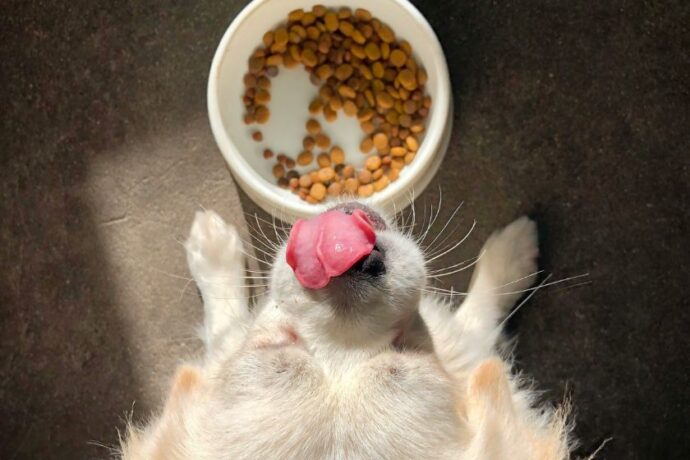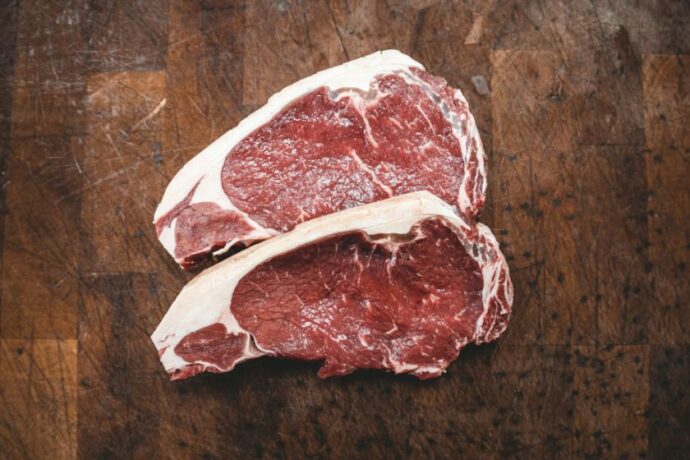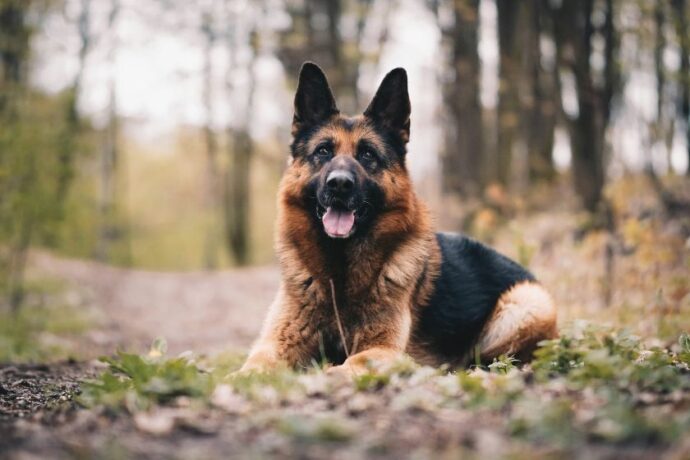
You might toss your dog a piece of your hot dog without thinking twice. Before offering this treat, find out how hot dogs will affect your dog’s health.
Can dogs eat hot dogs? Yes, but only in moderation. While you might think this is a safe meat to feed to your dog, keep in mind that hot dogs are processed foods. And as with all processed foods, there are more ingredients in hot dogs than just meat. For this reason, read the ingredients on the packaging and limit how frequently you let your dog eat hot dogs.
Can Dogs Eat Hot Dogs?
When trying to determine whether you can feed hot dogs to your dog, it’s important to familiarize yourself with your pet’s medical history. You should know what foods and ingredients cause your dog to experience allergic reactions. If your pet reacts badly to gluten or lactose, keep those conditions in mind as well. Avoid hot dogs that contain ingredients you know will lead to adverse reactions.
Otherwise, you can feed hot dogs to your dog in moderation. As you read the packaging label, make sure the hot dogs are 100% beef, turkey, or chicken. Since vegetarian hot dogs come from plant-based products, they may also be safer for your dog.
Can puppies eat hot dogs? Follow the same practices you would follow for an adult dog when choosing the right hot dogs. Keep these snacks as healthy as possible by selecting products without long lists of additives.
Keep in mind that there will always be some ingredients in hot dogs that aren’t healthy for your dog. For this reason, only offer this food as a rare treat rather than making it a regular addition to their diet.
How to Feed Hot Dogs to Your Dog
When feeding hot dogs to your dog, be mindful of the extras you’re tossing along with the hot dog. If your dog eats ketchup or mustard in a very small amount, they will be okay. However, you should avoid feeding your pet a hot dog loaded with condiments.
Tomatoes contain tomatine and solanine, which are toxic to dogs in larger amounts. Although these toxins are primarily found in the stems and leaves of the tomato plant, large quantities of ketchup could still contain traces of these compounds. Additionally, the sugar and salt in ketchup contribute to health problems.
Mustard is a more hazardous food for your dog. Your dog may be fine if they sneak a taste of mustard from time to time, but you should avoid feeding it to them intentionally.
The mustard seed contains two compounds that are hazardous to a dog’s health: isothiocyanate and glucosinolate. In particular, isothiocyanate can inflame the lining of your dog’s stomach, causing ulcers. And glucosinolate leads to digestive problems, resulting in vomiting, diarrhea, and excessive gas. Mustard also contains compounds, most notably goitrogens, that can affect the functioning of the thyroid gland.
The first signs of this issue involve digestive health issues, leading to vomiting as well as stool and metabolic changes. Thyroid glands are also essential for brain functioning and bone development. In addition, prolonged exposure to goitrogens can contribute to bone and brain health problems as your dog ages.
Finally, you should make sure that no pieces of the hot dog are in the bun when offering this snack. The sugar and carbohydrates the bun contains will contribute to multiple health problems. In much the same way that these empty carbs affect people, white bread and similar foods can cause your dog to develop obesity, diabetes, and other metabolic conditions.
Can Dogs Eat Hot Dogs Cooked?
Yes. If you’re going to feed a hot dog to your pet, this is the best way. People often ask, “Can dogs eat uncooked hot dogs?” without realizing the increased health hazards associated with doing so. Raw, processed meat contains bacteria that are harmful to the dog. Letting your dog eat raw hot dogs will likely lead to gastrointestinal problems and other health conditions.
When giving your dog a cooked hot dog, plan to share only one or two small pieces rather than the whole thing. In fact, a small chunk of a cooked hot dog is a common way to hide a pet’s medication.
When you do this, though, make sure to avoid using large chunks of the fully cooked hot dog, as these can pose a choking hazard. Instead, hide the pill in a small piece that your dog can easily swallow. The scent and flavor will be enough to disguise the presence of the medication.
What Are the Dangers of Feeding Hot Dogs to Your Dog?
One of the biggest dangers of letting your dog eat too many hot dogs is the sodium nitrate they contain. Sodium nitrate has links to cancer in people and dogs, so this is the best reason to limit the inclusion of hot dogs in your pet’s diet. Additionally, hot dogs contain monosodium glutamate (MSG), which causes damage to the liver, kidneys, and brain in dogs.
Another hazard to watch out for when feeding hot dogs to your dog is the presence of artificial sweeteners. Xylitol is an especially harmful artificial sweetener, so avoid hot dogs, condiments, and other products that contain it.
Once xylitol enters the dog’s bloodstream, it begins to impact the dog’s body, causing it to release a massive dump of insulin. The insulin boost in turn leads to weakness, and your dog may even become nauseous and begin vomiting.
Finally, make sure to keep a close eye on the sodium that your hot dogs contain. While every mammal needs some sodium to survive, too much of it will lead to health problems for your dog.
Your dog’s weight will determine how much sodium they need in their diet, and your veterinarian can give you a precise calculation. Before you decide to feed your dog a chunk of hot dog, remember to account for its sodium content.
For example, suppose that you have a dog weighing 33 pounds. This pet should only have a daily maximum of 200 mg of sodium per day. One hot dog typically contains at least 500 mg of sodium. Even half of this hot dog would give a 33-pound dog more sodium than they should get for the entire day. Keep in mind that your dog’s regular food, treats, and snacks will also contain sodium.
You may now be wondering what happens when your dog consumes too much sodium. The immediate effect is dehydration, which is why your dog will run for a drink of water shortly after consuming a hot dog. A regular diet of hot dogs will eventually lead to consistently high levels of sodium, which can cause hypertension or high blood pressure.
Know the Symptoms of Health Problems
If you do decide to share hot dogs with your dog, watch for any symptoms that a problem has occurred. The most obvious signs to check for include vomiting and changes in your dog’s stool. The stool changes may include diarrhea or more frequent stool movements.
Vomiting can also be a sign that hot dogs are causing gastrointestinal issues. Nausea and vomiting might suggest that your dog has an allergy to one or more ingredients in the hot dog you fed them. This might be something you should follow up with during your dog’s next veterinary check-up.
Since sodium intake is a major concern, watching for the signs of dehydration is essential. While thirst is one obvious indicator that you’ll notice, there are more symptoms of severe dehydration in dogs, including the following:
- Reduced skin elasticity
- Dry nose
- Dry or sticky gum tissue
- Panting
- Reduced energy
- Sunken or dry eyes
You might also observe that your dog has lost its appetite. This is another sign that they are severely dehydrated. If you notice these symptoms, your dog should undergo an exam with your veterinarian. It’s a good idea to stop feeding your dog table food until you hear what the vet has to say.
As a general practice, make sure your dog always has access to fresh, clean water. And pay attention to how frequently you have to refill the water bowl since this can help you recognize the early signs of dehydration.
Try Similar Foods That Are Healthier for Your Dog
Can dogs eat hot dogs safely? While offering this food as a rare treat is okay, you should look for healthier options. For example, there are many other types of meat that are better for your dog. Avoid sausage and bratwurst since these processed meats present similar health hazards to hot dogs. Instead, you can give your dog plain beef, chicken, or pork.
When offering your dog other meats as a treat, keep in mind that any seasoning you add might lead to health issues. In particular, avoid adding salt to the meat. Don’t include spicy seasonings, either. Keep the meat as plain as possible, and make sure it’s properly cooked. Then, dice it into small pieces that are easy for your dog to swallow.
Look for lean cuts of fresh meat or poultry. Fish is acceptable as well. In most cases, you should avoid anything that’s processed and prepared in a manufacturing facility. In addition to hot dogs and similar foods, this includes staying away from packaged burritos, hamburger patties, or breaded chicken patties. All these items will have extra ingredients that can harm your dog’s health.
You can also experiment with fruits and vegetables. These foods make healthier treats for your dog, especially when counting calories is important. Overweight or inactive dogs won’t need many calories, so plant-based foods offer healthier options. You also won’t have to worry about additives in fresh produce.
Fruits make sweet treats that your dog may enjoy. Look for fruit that’s sweet yet contains lower amounts of natural sugar. Some examples include most berries (strawberries, raspberries, or blackberries). You can also try bananas, watermelon, peaches, and plums.
Fresh veggies are an option as well. Dogs tend to like eating foods that are crunchy or make crackling sounds when they chew them. Zucchini, celery, carrots, and cucumbers all make great snacks that dogs enjoy eating. If you find that your dog doesn’t like these foods, try other vegetables until you find something your dog does enjoy.
Even when you take the time to find snacks that are safer and healthier for your dog, you can still enjoy the pleasure of sharing food with them. Looking for healthier options will also help you eat a healthier diet. Together, you and your dog can enjoy delicious foods without having to worry about their adverse effects on your health.
Keep an Eye on Your Dog After Their First Hot Dog
As with any new food, you should start out by giving your dog a small piece of a hot dog. This will give you a chance to see how your pet reacts to the new snack. If you don’t notice any digestive concerns, you may be able to feed hot dogs to your pet in moderation. If you do see an adverse reaction, however, consult your veterinarian about safer alternatives.



